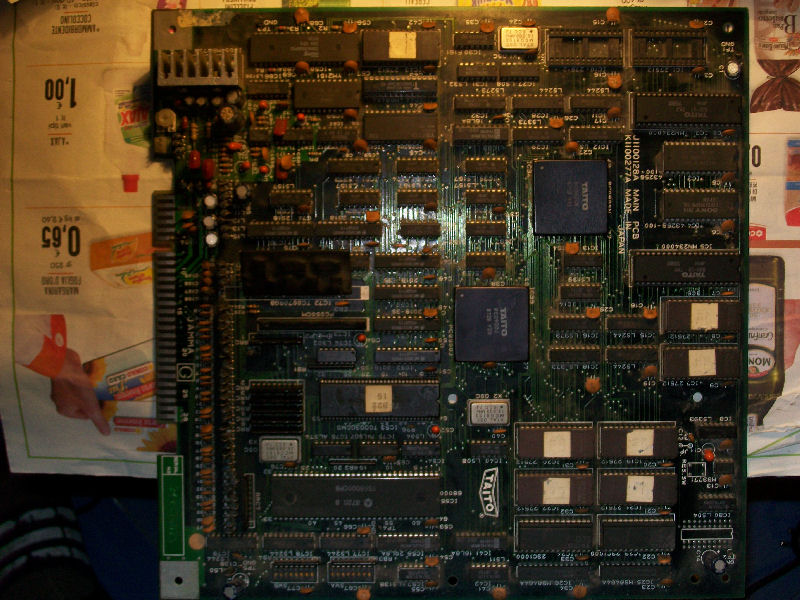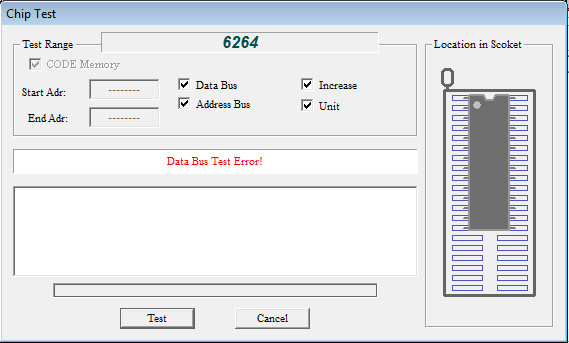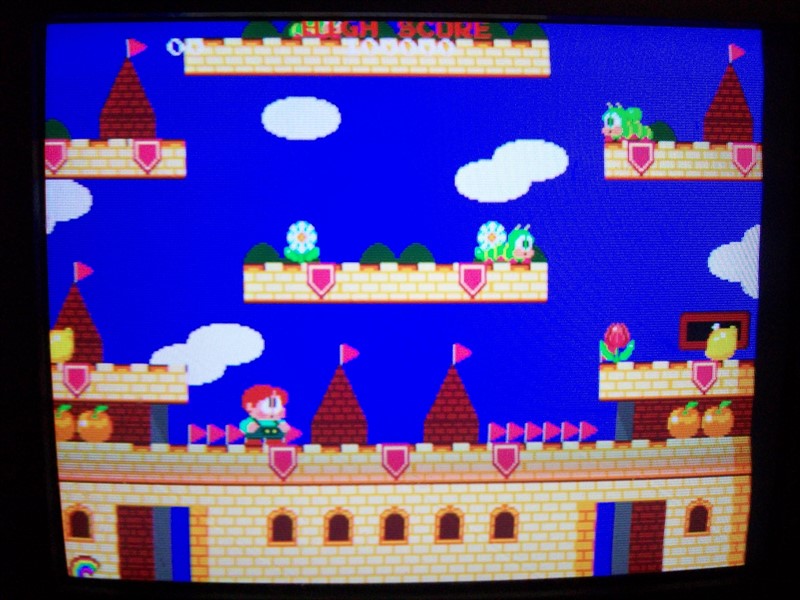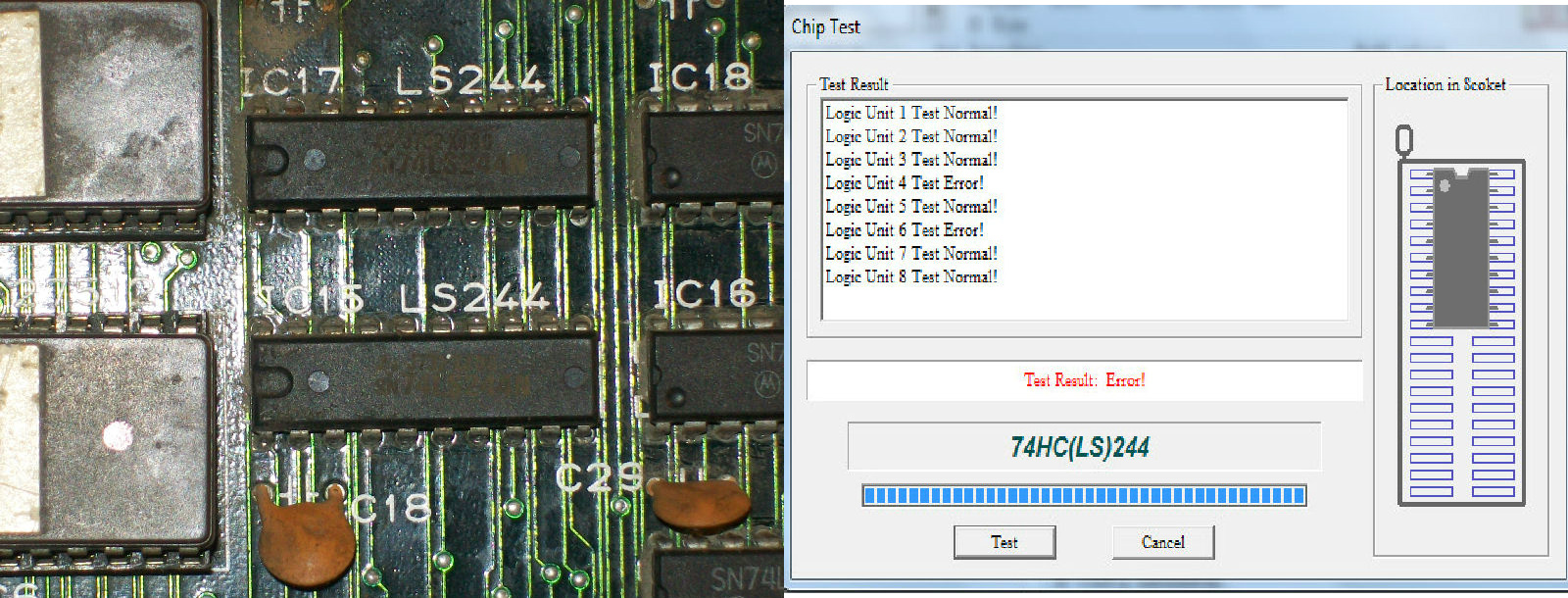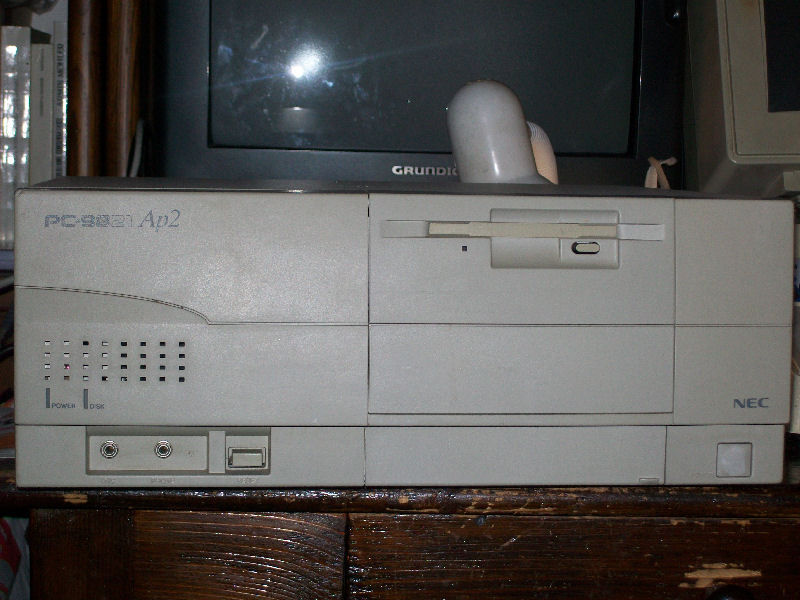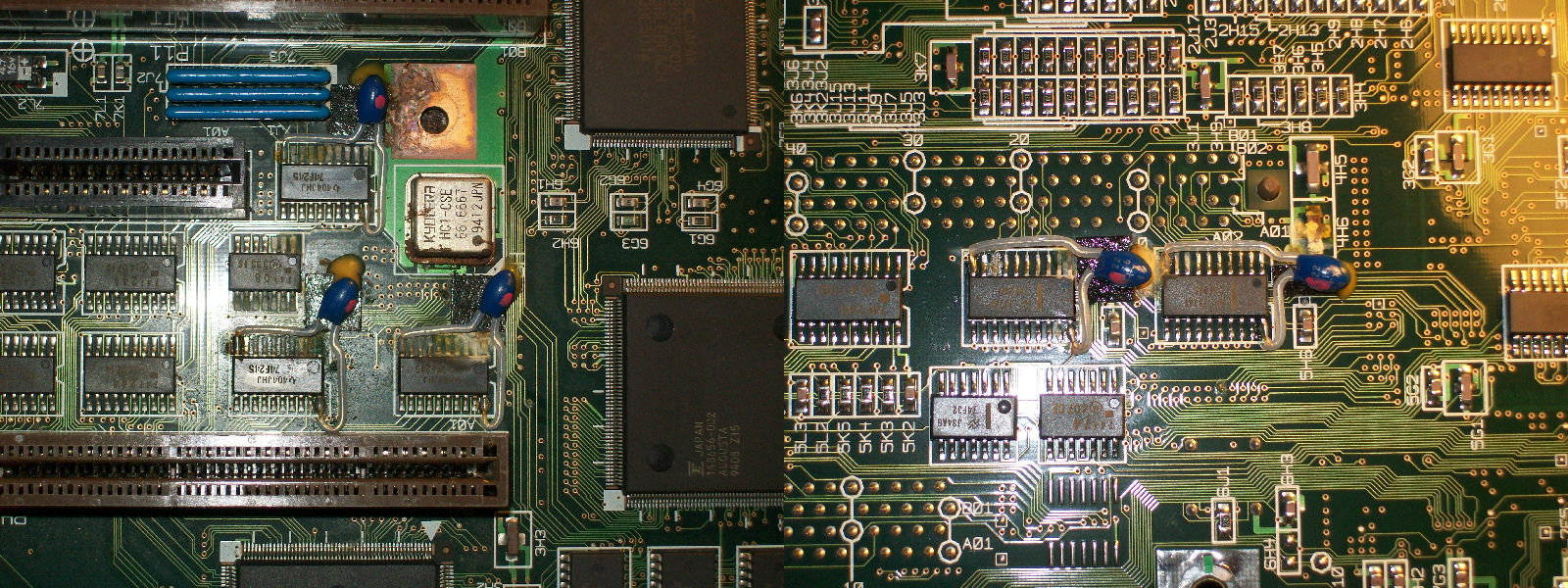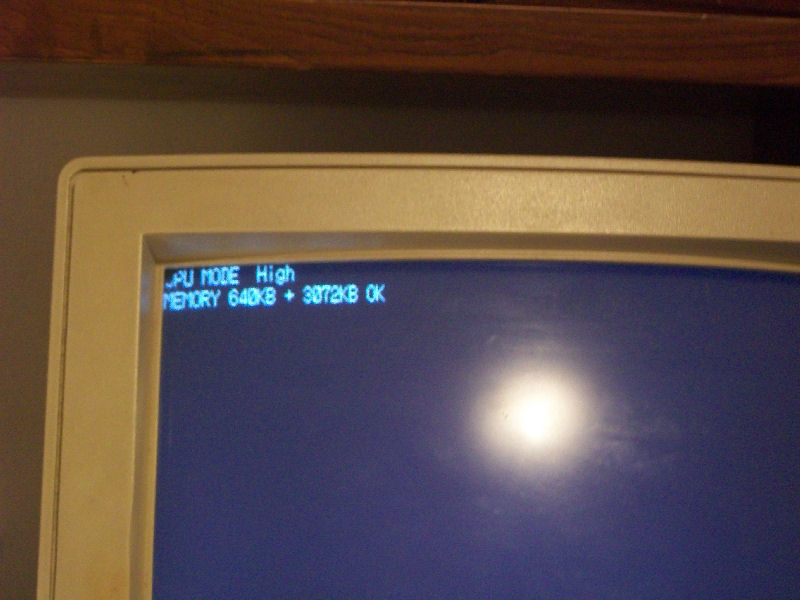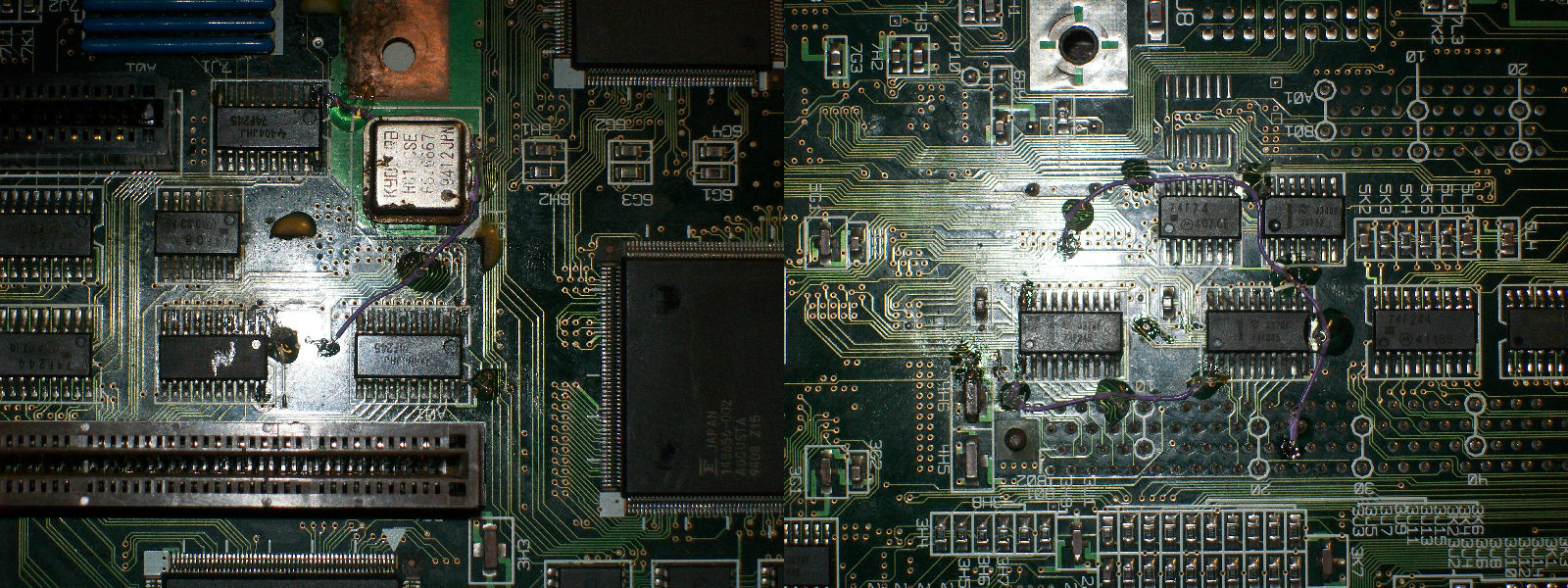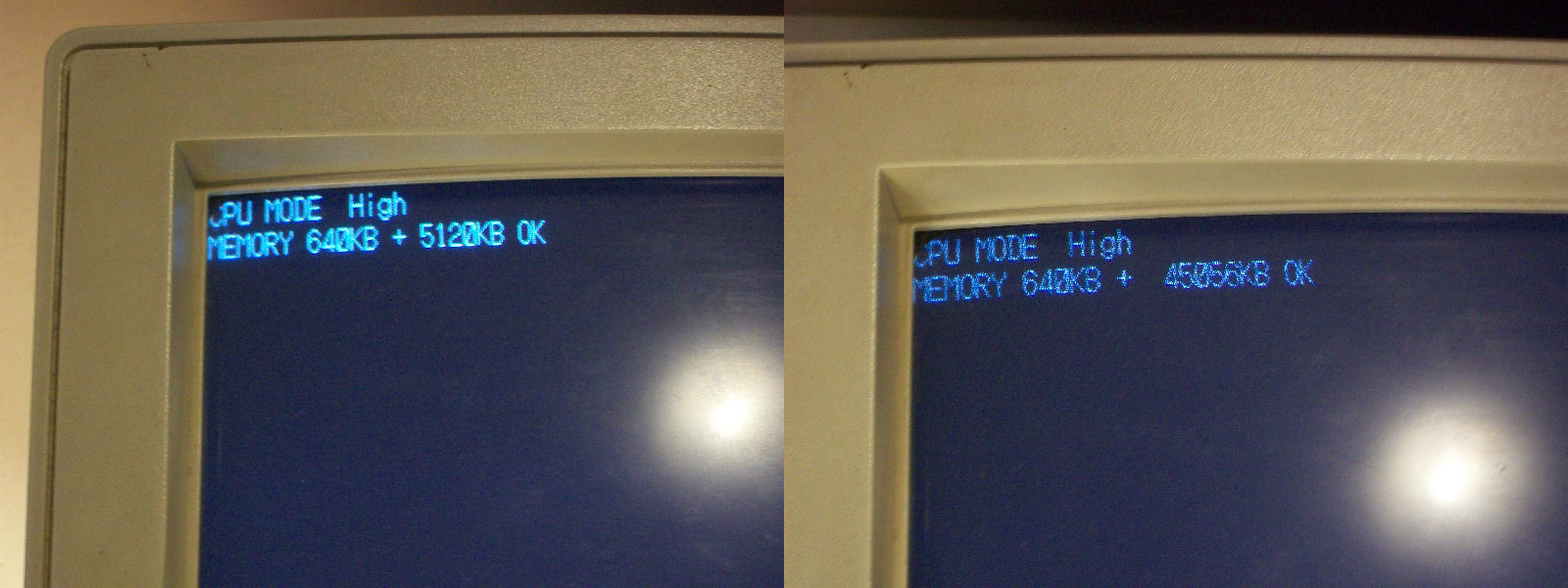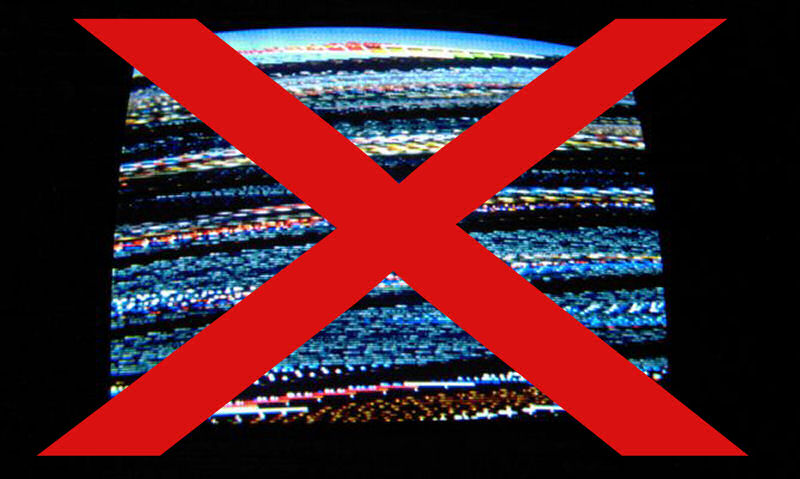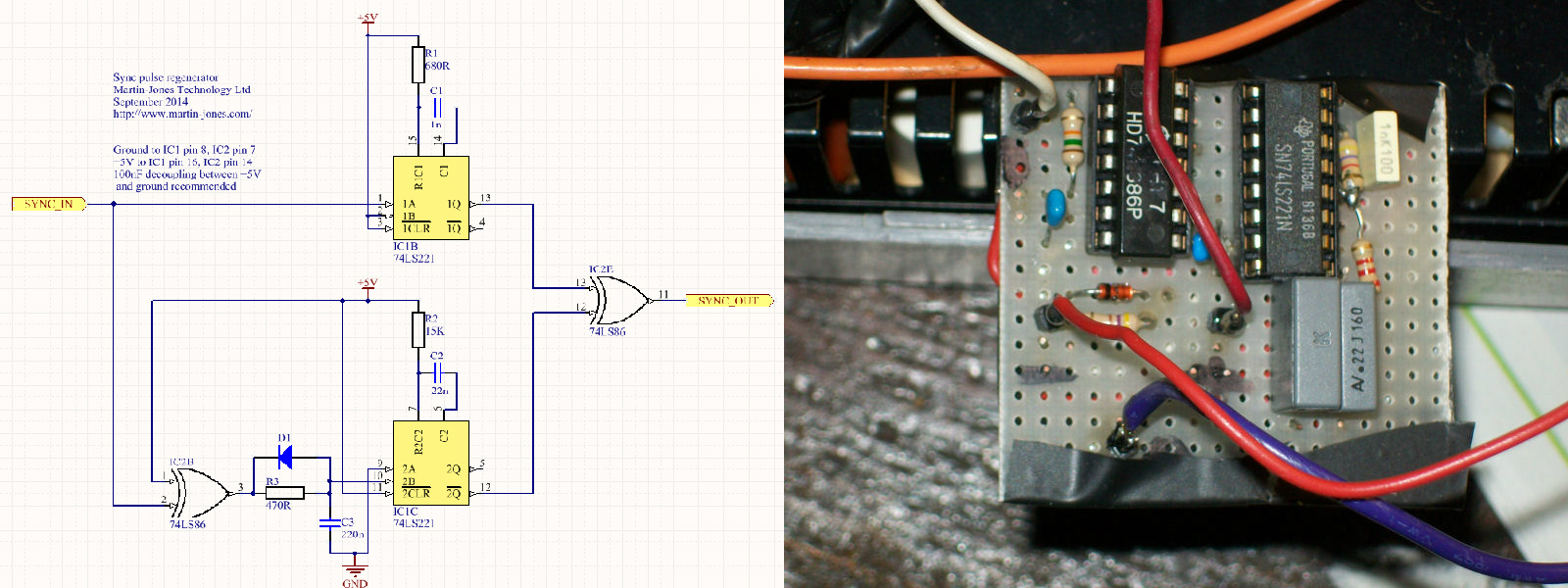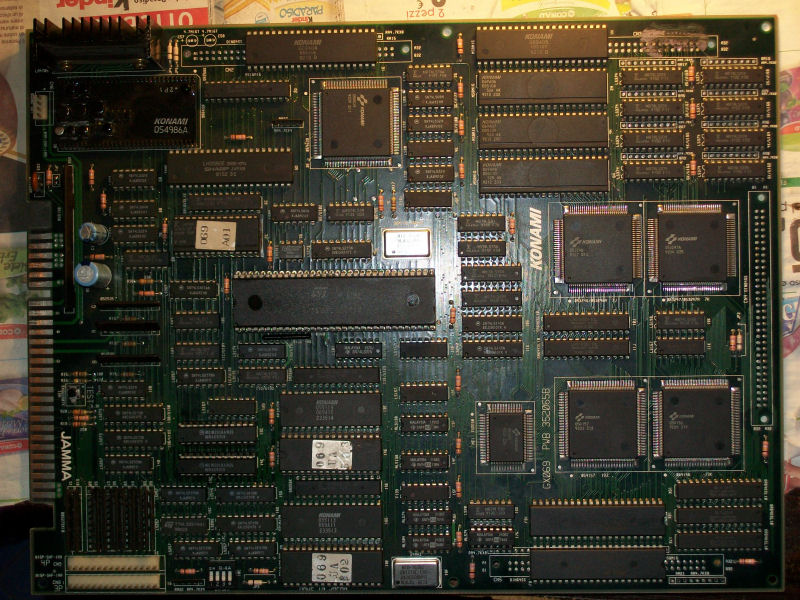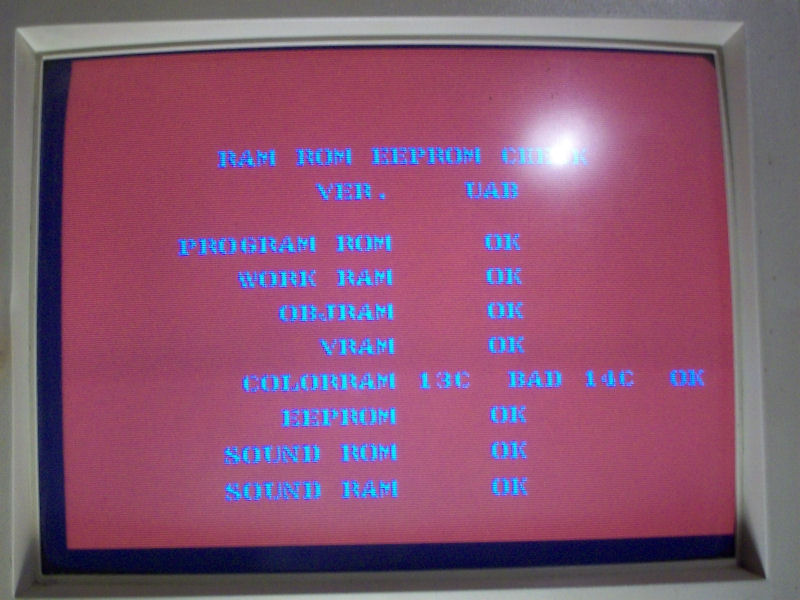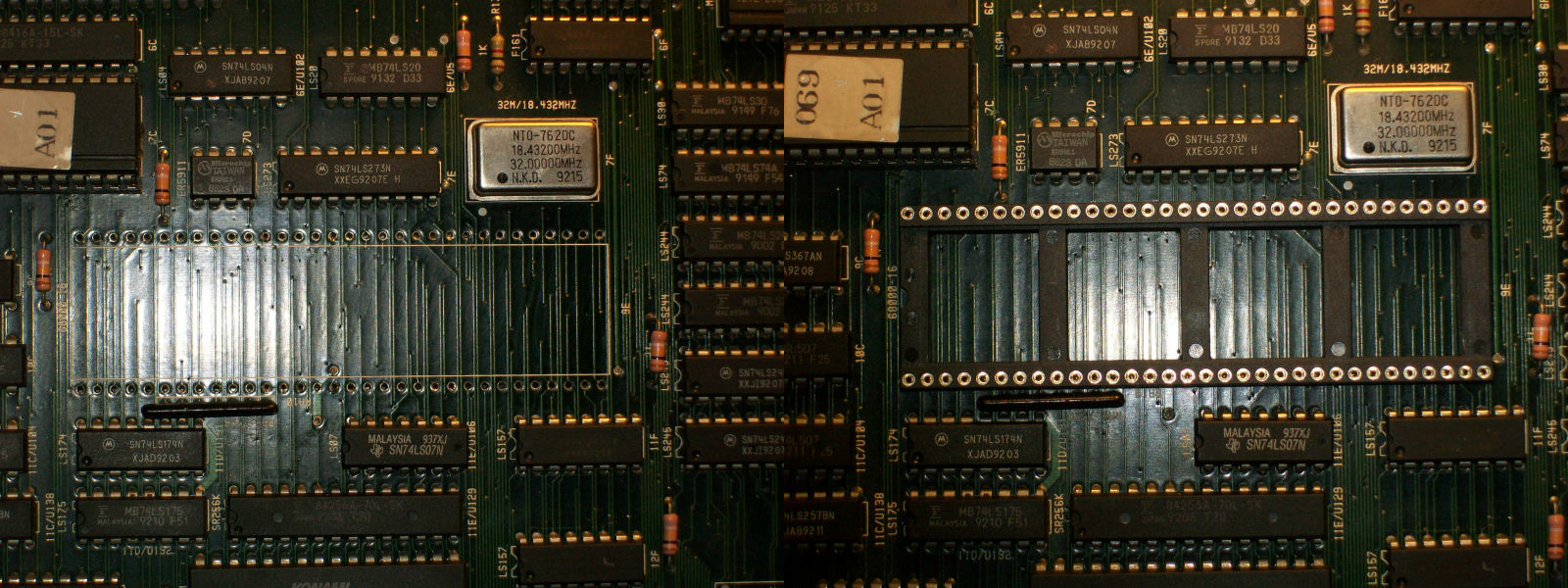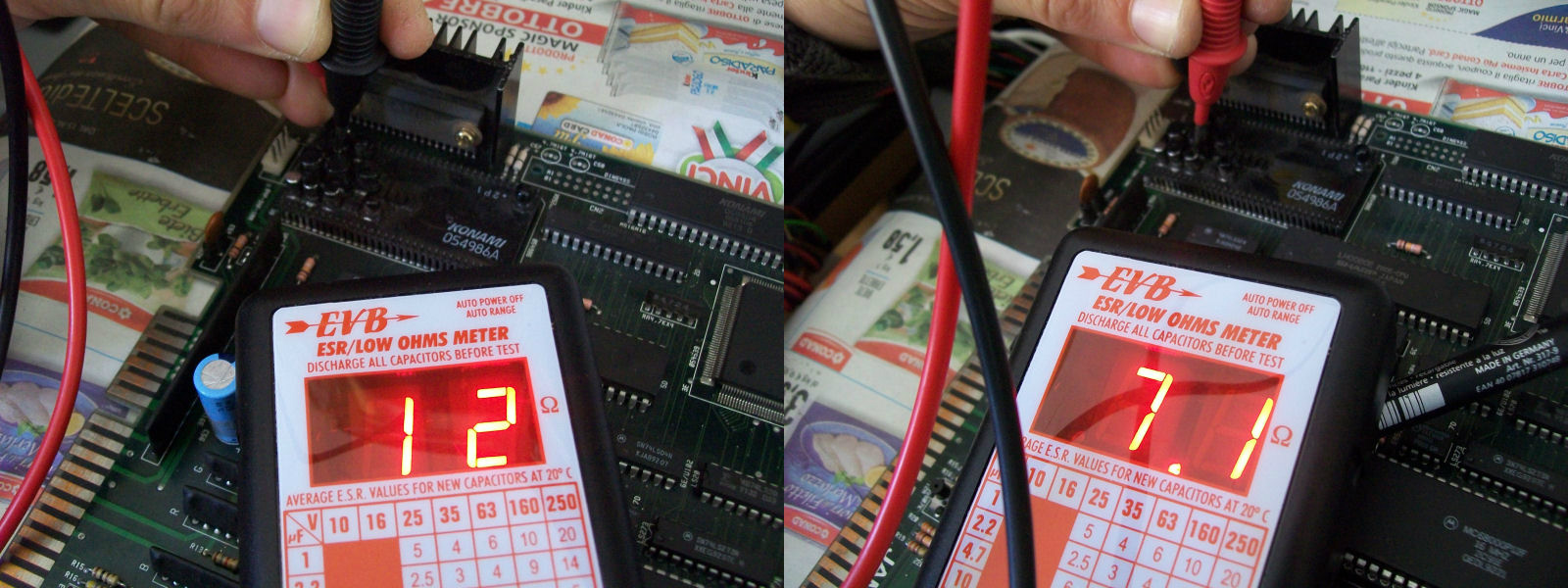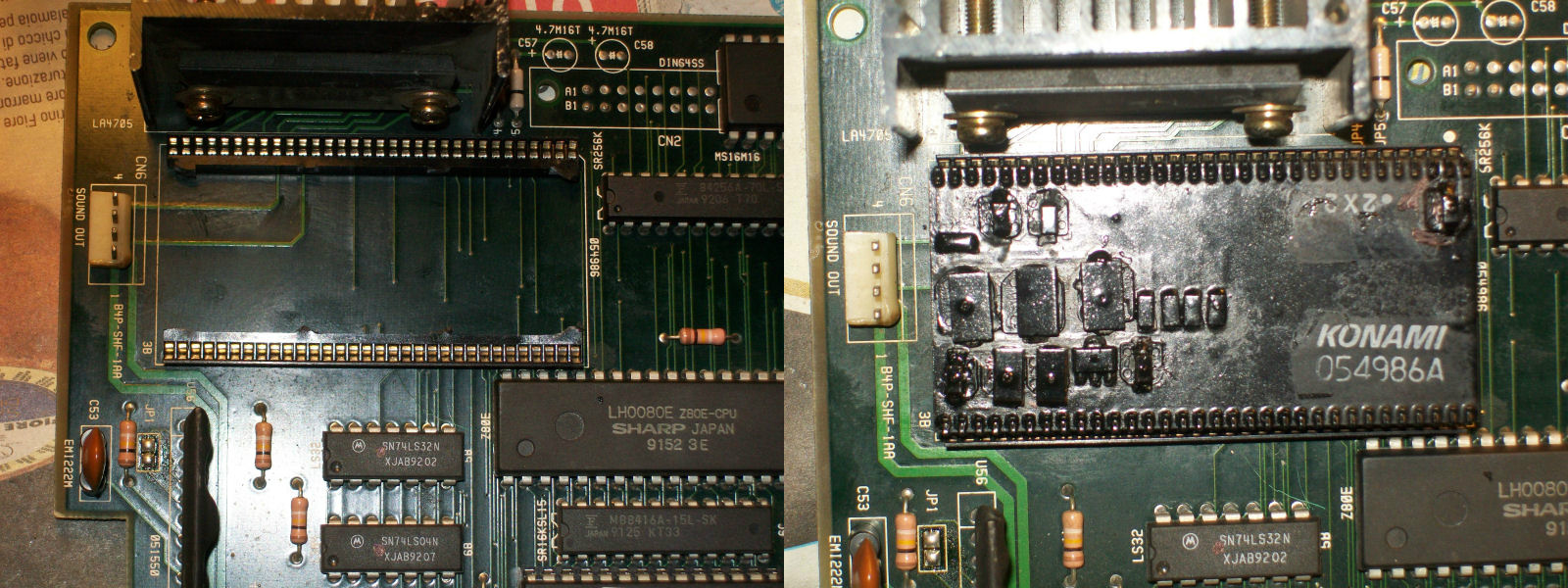Today I dumped the two PALs (20 and 24 pin) from an original Konami Violent Storm PCB which was not working and now has been fixed (repair log will follow soon).Dumps are tested and working in a GAL16V8 and GAL22V10 replacement devices.
All good things come in threes!
Yes, this is the third Rainbow Islands PCB (the fourth if we include the Extra version) I repaired.The PCB was in good state (dust apart):
But all I get was a solid blank screen upon powered it on, no activities on DATA/ADDRESS bus of 68000 CPU, RAM and ROM.The program ROMs were dumped as good so I went to the two 6264 WORK RAMs @IC25 and @IC26 and, mindful of what had already happened with the other Rainbow Islands PCBs, I desoldered them and tested out-of-circuit.Both were bad!
With new WORK RAMs fitted the board sometimes booted stuck on “OBJECT RAM ERROR” other times with jailbars all over the sprites:
Jailbairs are a clear symptom of wrong written data.Sprite generation circuit on this PCB is made of a PGA custom ‘PC0900J’ , four 2018 SRAMs , some latches and buffers.Piggybacking the RAMs had no effect but when I made it on a 74LS244 @IC15 the jailbars faded and then disappeared completely when I piggybacked the other 74LS244 @IC17.
Desoldered them and tested out-of-circuit confirmed they were both bad:
Graphics were perfect at this point.Last issue to troubleshoot was the absolute lack of sound.When I was gonna to analyze the sound circuit I noticed @IC44 the 6264 RAM of the Z80 audio CPU was already socketed so I decided to test it resulting in a bad chip.Replaced it restored the sound.Board 100% fixed!
There are not only arcade boards to repair in the life…but also computers (and japanese ones are really cool)!
I got from Japan this ‘junk’ NEC PC-9821AP2/U8W in the mail some days ago (after a wait of two months), seller said only it was not working without going into details.
Powered it on and I got a solid black screen so was time to disassemble it.Motherboard was clean except for this:
Surpringsly all electrolytic capacitors were in good state for a machine with more than 20 years old but there was sign of corrosion near five 22uF 16V tantalum capacitors which leaked spreading their dielectric on pcb.This was most likely caused by the glue used to hold them in place that turned corrosive with age.These capacitors were mounted as decoupling on five 74F245 which are used for DATA communication between DATA buses.In this hardware they were interposed between four NEC 42S4800 DRAM chips and connector of the CPU riser card.So, with these premises, I was quite sure that fault was located in this crucial part of the motherboard.After removing the leaking capacitors and cleaning the circuit, I started to probe continuity between each pin of the five 74F245 and motherboard and , following a scheme that I had prefigured, I found that PIN2 of one of these was not connected to the CPU card connector like all other so one bit was missing and the system was halted.Jumpered the two points and finally system successfully booted:
But immediately something sounded strange to me.According to its specs the PC-9821AP2/U8W model should have 5.6MB of default RAM (first 640KB are conventional memory plus 5MB of extended RAM) while, as you can see from picture above, mine had only 3.6MB so I missed 2MB of them somewhere.Also using an addon RAM card didn’t change the amount of memory.So, something else had to be wrong.Luckily I had another same PC with a good motherboard and tracing it I found that the five 74F245 had PIN1 (direction PIN which select the direction of the DATA transfer) in common while in the faulty motherboard this was only for two of the TTLs.So, due this, DATA could not be transferred from all available RAM to CPU resulting in only 3MB in total.
So I tied PIN1 all toghether with some AWG30 wire:
and the missing 2MB came back as well all extra memory of the addon card:
Another job done.
Sync troubles, i.e. rolling/flickering picture,curved sides, etc.., on your beloved arcade PCBs?
Now the “sync stabilizer”, copyright by ‘MARTINJONESTECHNOLOGY’, beats ’em all !
Today I assembled on a stripboard this little circuit and installed it in my supergun.It really fixed all my sync issues with my troublesome boards (mostly bootlegs) which I never been able to solve in other way (trying, for example, the LM1881 sync stripper/cleaner)
Circuit is simple to do (but very effective),it requires only few common components.Technically speaking, it doesn’t modify the sync signal frequency but only the horizontal pulses lenght bringing them back in the broadcast standards.
For bill of materials and other technical explanations, I refer you to the official page of the creator:
https://martin-jones.com/2014/09/16/that-syncing-feeling-classic-arcade-games-that-wont-stay-still/
I highly recommend you to give it a try, you won’t be disappointed.
G.I. Joe repair log #2
Yes, yet another G.I. Joe PCB on the bench (this is the third I repair).Let’s start with the log.
PCB was in a clean state:
But, as often happens with this Konami hardware, board had the watchdog active sign that there was a problem in main code execution or in the CPU itself.As usually I started my troubleshooting analyzing the main 68000 CPU and I found that, though the RESET signal was correctly generated by the custom ‘051550’ and reached the CPU, PIN17 (/HALT) and PIN18 (/RESET) of 68000 were stuck LOW so it was not never inizialized (all control lines were obviously silent ,too).So, judging from this,I started to suspect that 68000 was really faulty.I decided to do an “extreme” piggybacking with a good know CPU and sometimes I got it booting showing a bad color RAM:
This was enough to desolder the main 68000 CPU (a 16MHz one manifactured by ST) fitting a proper 64PIN socket:
Trying it in another board I obtained a solid black screen sign that it was realy bad (it’s the first time I came across a faulty 68000 CPU, never happened before).With a new 16MHz 68000 fitted in the socket board succesfully booted always showing the color RAM error above but I quickly fixed this by replacing both 2018 SRAM (also the one @14C was bad)
As I expected in this kind of Konami hardware which use ‘054986A’ hybrid custom sound module there was absolute lack of sound ,only some popping noises sign that the LA4707 amplifier was still alive at least.So was time to replace all the SMT electrolytic capacitors with new tantalum ones as they were leaking and having ESR value out of specs:
and install proper 1.778mm pitch sockets for the module to finish the job:

